- Home
- Louis L'Amour
Education of a Wandering Man Page 18
Education of a Wandering Man Read online
Page 18
Often these are the books I want most and the only place to find many of them is when some collector dies and his library is sold.
I have made no effort to gather the so-called great books. Most of them I read during my knockabout years. The books I have are of immediate as well as lasting interest, and already my library has grown beyond the space available. A book that stands on my shelf may well be the result of reading a dozen or twenty books or, at least, examining them, for I have tried to get the best.
If you come looking for old friends you will find a few. Candide, A Sentimental Journey, The Brothers Karamazov, Byron’s Childe Harold, much of Tennyson, but many of the books will be strangers. There will be books on the food that people ate and how they ate it, on their costumes, their homes, and how they entertained themselves. History to me is the story of people and how they lived, not just an endless story of dynasties and wars. They are a part of the story, of course, and my library is very complete on how wars were conducted, castles built and defended, armies supplied, and treaties arrived at.
The beauty of educating oneself as I was doing, or as anyone can do, is that there are no limits to what can be learned. All that is learned demands contemplation, and so one is never at a loss for something to do.
When writing of Chinese literature earlier, a book I failed to mention was the Chin P’ing Mei by Hsu Wei. This is a somewhat pornographic novel written of Hsi Men and his six wives, written at about the time of Shakespeare.
Meeting the censor on the street, the author was asked what he was writing, and was told that the censor wished to see it immediately upon its completion. At the time China was going through one of its periods of strict censorship, so Hsu Wei, according to the story, made plans.
He had his book printed on extremely thin rice paper and before submitting it to the censor he carefully planted a small dab of poison on the upper right-hand corner of each page.
ALTHOUGH INVOLVED WITH studying the Far East, I at no time neglected my study of the American West. Much of what I was writing concerned the West and it was my duty as a writer to present as honest a portrayal as possible. To that end I was not only traveling the country but reading approximately thirty books a year on the West in its many aspects.
For example, I read Ancient Hunters of the Far West by Malcolm Rogers, Journey to the Rocky Mountains, 1839 by Fred A. Wizlenzenus, Humboldt to the Pacific by Jacob H. Schiel, Conquest of New Mexico and California 1846–48 by Philip St. George Cooke, A History of New Mexico by Gaspar Perez de Villagra, New England Indians, Volumes I and II, by Leo Bonfanti, and many more.
Along with these, I read The History of Ideas by George Boas, Journal of a Novel by John Steinbeck (which he kept while writing East of Eden), and The Natural Geography of Plants by Henry A. Gleason and Arthur Cronquist.
This is a fair sampling, but no more than that. Most of this time I was crisscrossing the country with my family, visiting lonely water holes, old line-camps, cliff dwellings, and the places where frontier history happened. Wherever possible, I took along some old cowboy or miner who would tell me who had lived where and who had worked the claims. Along with such information, there were always a lot of stories, glimpses of personalities, of bad horses, of bronc riders and Indians.
Prowling about in the mountains was always exciting, discovering areas I would someday use in a story or some bit of information that would add to another. As I was writing one story, I was always preparing for others, and loving every moment of it.
People often ask me if I ride horseback. To tell you the truth, I have not been on a horse in years. Yet there is no reason why one should ride a horse to write about it, and I did my riding in the past. Now I ride to the sites I wish to explore in a four-wheel-drive vehicle and then get out and hike.
Why? Because I am constantly looking for artifacts, for plants I wish to identify, for others whose manner of growth I wish to understand. To do this, it is better to be on foot. There are crevasses I wish to crawl into, ruins I wish to check out, and many such things.
If one of my characters is wounded, I want him to treat his wounds with what he would find available. Most western men were familiar with simple home remedies as well as some Indian treatments. Few people had ready access to a doctor, even in the eastern states, and the doctors themselves often used home remedies they had inherited from older physicians. One did the best one could with what one had, so in my stories the treatments used are what would be available at the time and place.
In the earliest days in the mountains, infection was rare. In the fresh mountain air and on the diet available, men recovered rapidly from serious wounds. Some of the Indian remedies were quite useful, but as we all know, many people simply recover. The mountain men, for example, and western men generally, were in excellent health to begin with.
Few carried even a pound of excess weight. Most were constantly moving, walking, running, bending, kneeling to set a trap, actively exercising. Their drinking binges were rare, as whiskey was available only in towns, and such bouts with the bottle were often separated by months or even years.
To write well of the West, it is essential to have considerable basic knowledge, and to continue to learn.
Many of the buffalo hunters, for example, disliked the killing, but it was their way of making a living, and no matter what one thinks now, the buffalo had to go. On those vast plains where buffalo roamed (and where a buffalo wants to go, he goes!) there are now great universities, hospitals, homes, and food enough raised to feed half the world.
Shortly after World War II, when I was living in Los Angeles, I often took the train or bus to one of the towns near the Grand Canyon. Several times it was Peach Springs, Arizona. I knew no one there but would get off the bus and backpack into the canyons branching off from the Grand Canyon and spend three or four days hiking wild country, alone.
Most of my friends or acquaintances had jobs from which they could not get away, and not many of them would accept the rugged conditions I took for granted. Another place I often went was the wilderness area of Sycamore Canyon in Arizona. In those days there was a small railroad—the Verde-Mix, I believe it was called—and for a couple of dollars one could buy a ticket and the train crew would drop you off and pick you up later. Several times I went up into the Sycamore Canyon area, exploring, camping, simply living the life.
It is a beautiful area, near Oak Creek Canyon and Sedona, but kept even now as a wilderness, as well it should be.
We are fortunate indeed to have the works of many enlightened, interested travelers in the West at its various stages. For my purposes, the West was any place beyond the existing frontier, which at first was east of the Appalachians. We have such works, for example, as Travels Through the Middle Settlements of North America, 1759-1760 by Reverend Andrew Burnaby, Travels in America 1798-1802 by John Davis, Early Travels in Tennessee by Samuel Cole Williams, and many others, including John Bradbury’s Travels in the Interior of America in the Years 1809, 1810, and 1811. In this latter case we were indeed fortunate, as Bradbury was a naturalist and was on the spot when the New Madrid earthquake happened, the most devastating quake to strike North America in historic times. The quake occurred in Missouri and the neighboring areas, created Reelfoot Lake in Tennessee, and was felt as far away as Boston, Massachusetts, and Charleston, South Carolina.
The West of which so much is written did not suddenly happen. It was built upon much that had gone before. The travel accounts mentioned earlier were through country where the stage was being set for a different kind of life.
I must add that some of the Englishmen traveling in the West were much offended that men did not spring to attend to their horses upon their arrival at an inn. There were usually men hanging about, but they were living in a country where men did for themselves, and not as in Britain or France, where someone was always ready to serve. The independence of the frontiersman offended some travelers, but the frontiersman had no reason to be obsequious. There were no cla
ss lines, and a man was what he made himself to be. If the tavern in question had no one on hand to take one’s horse, he stabled and fed it himself.
We are fortunate as well that there were so many travelers who not only wandered the country but wrote excellent accounts of what they saw, so we can know what it was like at almost any point in time.
My own family history was often a reference point for me. I have not written about it thus far, but it was useful in calculating the generations of other families. On one side of my family (and probably at least three) I am a tenth-generation American, and I have used my own family as a measuring stick for others of whom I write.
Always, my reading was to understand, and it was for background. To re-create the life of a period in fiction, one must know as much as possible. What were the roads and trails like? How were taverns kept? What food might be available to a traveler? What about homes at various financial levels? And clothing? What did a pistol cost? Or ammunition?
If I knew how others were living, I would know how my characters had to live.
In checking out terrain, I often spent time just sitting and looking, or possibly hiking the trails to get an estimate of the time required.
How long would it take an able-bodied, reasonably athletic man to cross such a mountain? How long if he was injured in some way? Where could he find some primitive shelter if need be?
Many of the places about which I write were places I encountered during my knockabout years, where I worked, passed through, or camped. Others were simply places I passed by and noticed, or of which I learned from some chap in a café.
By the time I married, all that was behind me, but much of the traveling I did with my family was important. By that time I had learned to focus on what was most essential and I was seeking out particular places or people.
In Colorado we visited Mesa Verde and its Anasazi ruins again and again, learning a little more each time. At least twice we were present at an Illuminaria, where the rooms of Cliff Palace were lighted at night by candles.
We arrived shortly before dark and were in place before the candles were lighted. We had with us our friend Charlie Daniels, the country-western singer, and Cliff Brycelea, the Navajo artist whose painting is featured on the cover of my book The Haunted Mesa. Cliff commented that what we were seeing must have been much what it was like when inhabited. From down the canyon came eerie music—bagpipes, I believe—but far enough away to provide a sense of added weirdness to the scene.
As the candles burned down, those of us who had brought flashlights helped to guide others over the narrow trails and up steep stairways. I believe if the ghosts of the Anasazi linger among those dwellings, they would have been pleased to see them lighted once again. It was a hauntingly beautiful sight that remains with me still.
During the years that followed, I went often to visit cliff dwellings or other Anasazi ruins. I came to see, to learn, and to disturb nothing. Let the archaeologists who know what they are doing handle that. A pot or a broken fragment removed from its discovery site has lost much of its value. Slowly, with a discovery here and one there, the history of the Southwest is put together, but it is painstaking work, and the pot someone carries away to keep or to sell may be the key piece that would reveal much to the trained eye. Once on someone’s shelf and away from where it was found, the piece has lost most of its value.
Long ago, I had hiked up the floor of Mancos Canyon. Now I wished to stand at about the middle and get an overlook from the rim. With my family and an archaeologist who was working for the Utes on their reservation, we started to drive out to the rim and were overtaken by a police car.
Did we have a permit? We did not. Frank, the archaeologist, identified himself. The Ute police officer was cool. “I know who you are, and”—he indicated me—“I know who he is. I read his books. But if you don’t have a permit, you can’t go.”
We did not attempt to argue the case. This was their reservation, their home, and we obeyed the rules. He followed us back to headquarters to make sure we did.
A short time later, accompanied by three archaeologists and a Ute Indian, my family and I spent a night in a cliff dwelling on the Ute Reservation. The archaeologists arranged the affair and we drove out in four-wheel-drive vehicles to arrive just before sundown.
The cliff dwelling was in a deep canyon filled with trees, some of which had been lightning-struck. It was in a remote area and we climbed down into the canyon to find our places. There had been no cleanup there. The place was as time had left it: a few scattered human bones, some of the tiny corncobs, a few shards of broken pottery.
Kathy and I chose a kiva (ceremonial center) in which to spread our sleeping bags, and shortly after we arrived, there was a thunderstorm.
Nature seemed to have deliberately planned our entertainment, for there was rolling thunder, unusually loud because of the narrow canyon, and many flashes of brilliant lightning, but only a few scattered drops of rain fell. Nature put on a grand show for upward of an hour. Then the sky cleared, the moon came out, and we had a truly magnificent night.
Art Cuthair, the Ute who was with us, may well have been the first Indian to spend a night in a cliff dwelling since the Anasazi abandoned them. Many Indians are uncomfortable at disturbing the spirits of the former inhabitants.
(Art has been involved in stabilizing some ruins and in laying out trails for the guided tours the Utes give for visitors wishing to see the dwellings as they were found.)
We settled in for the night, each in his or her own way. I was determined to remain awake and enjoy every moment of the experience to the utmost.
Often we heard eerie sounds, whisperings and movements. The wind? The leaves? Small animals or birds? Or something else? Something from the past, perhaps, something from the forgotten years?
The moon was bright, and soon coyotes were singing their plaintive songs. Other Indians had stopped by to see us but would not stay the night. They went to sleep out of the canyon, away from the cliff houses.
Some of us slept; some remained awake with me. None of us talked. It was a time for listening. Once, faint and far-off, there seemed to be the sound of a flute or some wind instrument.
It is sometimes said that few archaeologists have ever spent a night in a cliff dwelling, and that no archaeologist has spent two nights.
However, I regretted the coming of day, although ready enough for breakfast.
*
…I am become a name;
For always roaming with a hungry heart
Much have I seen and known; cities of men
And manners, climates, councils, governments,
Myself not least, but honour’d of them all;
—ALFRED, LORD TENNYSON
from “Ulysses”
*
MY STUDY OF Africa began some years ago when I wrote a review for Carter G. Woodson’s The African Background Outlined. Shortly after that, I reviewed Black Folk: Then and Now by W.E.B. Du Bois. Until then, my knowledge of Africa largely stemmed from adventure stories or Burton’s books on Central Africa when he was searching for the sources of the Nile, although back in my Jamestown days, I had read Stanley’s search for Dr. Livingstone, called How I Found Livingstone, as well as its sequel, Through the Dark Continent.
Of North Africa, the Sahara Desert, Libya, Morocco, and Algiers, I knew quite a bit. Those areas were largely inhabited by Berbers, a white people, and by Arabs—the two often lumped together simply as Moors.
Long ago, Greeks had settled along the coast and later the Phoenicians had established themselves at Carthage, to become a dominant power until destroyed by Rome. The influence of all these peoples was felt along both the Mediterranean and Atlantic coasts of Africa.
My first knowledge of the great black empires of the Niger region had come from reading the travels of Ibn Battutah, however, so when I first came upon Woodson’s book, I was prepared for what he had to say, regretting the limited space in which he had to say it.
In the following years I read nearly two dozen books on some phase of Africa and its history, finding many that merely scratched the surface.
Later, when time permitted, I returned to Africa in Travels in Ethiopia by David Buxton, The Mountains of Rasseles by Thomas Pakenham, A Short History of South Africa by Leopold Marquard, South Africa by Brian Fagan, The Ancient Kingdoms of the Nile by Walter Fairservis, and that gem The Search For the Tassili Frescoes by Henry Lhote.
During the time I worked in mines, I had been fortunate to meet a number of old miners who had worked in Virginia City, Nevada, during its boom days and after. At the Katherine Mine it was the custom, as in others as well, for the miners to gather at the station to await the cage that would take them to the top when the shift was over. There they would wait and listen for their shots to go off from the fuses lighted before coming out. It was imperative to count the shots and be sure all the holes fired; otherwise one might, the following morning, drill into a missed hole, detonating the unexploded powder. This could mean death or serious injury to the miner and anyone close by.
During this time of sitting around the station, stories would be told, and I learned much that later served well in creating the background for my book Comstock Lode.
Virginia City in its heyday was certainly one of the most remarkable of the many remarkable boom camps that flared to brief glory in the West and then settled down to the day-to-day job of getting the ore out. The so-called Comstock Lode was one of the richest mineral discoveries ever made and the life there was rich and colorful, creating several millionaires, one of whom was John Mackay.
John Mackay walked into Virginia City broke and when he left he was worth $200 million. He made it through a shrewd appreciation of the lay of the land, the probabilities of what must have happened when the great rift was created that was the source of the silver, followed by quiet purchase of seemingly played-out claims.
John Mackay not only made his millions in Virginia City, he knew how to spend them, and when Jay Gould’s transatlantic cable system charged him too much for cables to his wife, Mackay built his own cable.

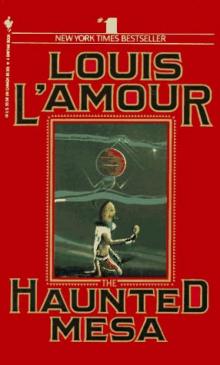 Novel 1987 - The Haunted Mesa (v5.0)
Novel 1987 - The Haunted Mesa (v5.0)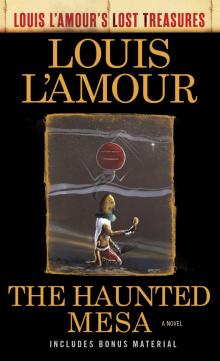 The Haunted Mesa (Louis L'Amour's Lost Treasures)
The Haunted Mesa (Louis L'Amour's Lost Treasures)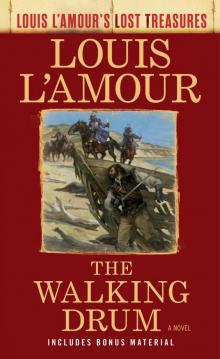 The Walking Drum (Louis L'Amour's Lost Treasures)
The Walking Drum (Louis L'Amour's Lost Treasures)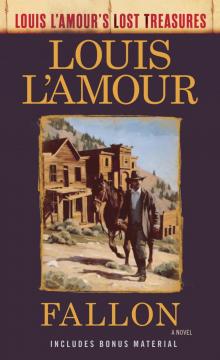 Fallon (Louis L'Amour's Lost Treasures)
Fallon (Louis L'Amour's Lost Treasures)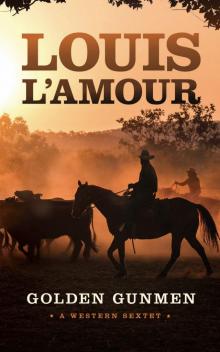 Golden Gunmen
Golden Gunmen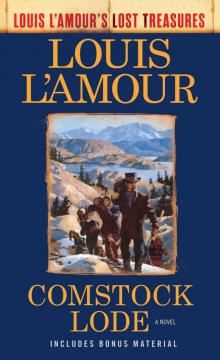 Comstock Lode
Comstock Lode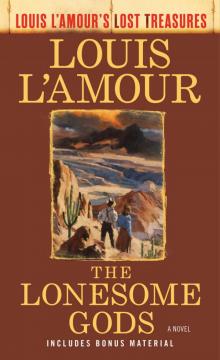 The Lonesome Gods (Louis L'Amour's Lost Treasures)
The Lonesome Gods (Louis L'Amour's Lost Treasures)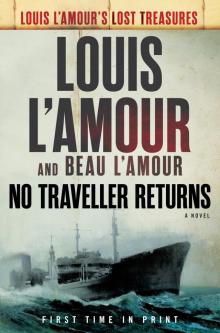 No Traveller Returns (Lost Treasures)
No Traveller Returns (Lost Treasures)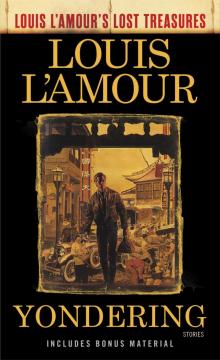 Yondering: Stories
Yondering: Stories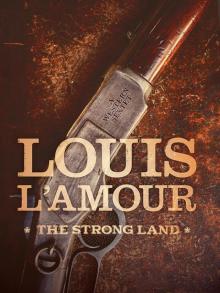 The Strong Land
The Strong Land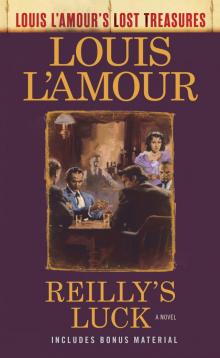 Reilly's Luck (Louis L'Amour's Lost Treasures)
Reilly's Luck (Louis L'Amour's Lost Treasures)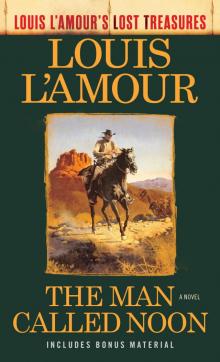 The Man Called Noon (Louis L'Amour's Lost Treasures)
The Man Called Noon (Louis L'Amour's Lost Treasures)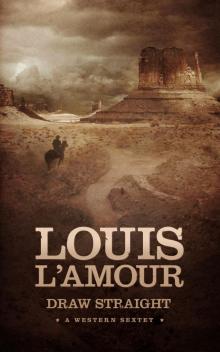 Draw Straight
Draw Straight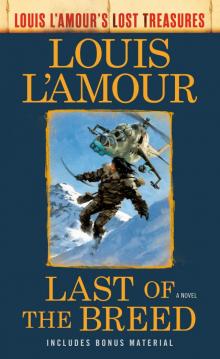 Last of the Breed (Louis L'Amour's Lost Treasures)
Last of the Breed (Louis L'Amour's Lost Treasures)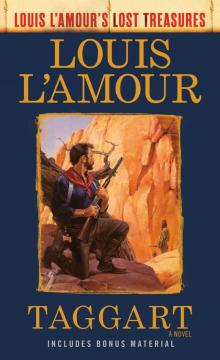 Taggart (Louis L'Amour's Lost Treasures)
Taggart (Louis L'Amour's Lost Treasures) The Hopalong Cassidy Novels 4-Book Bundle
The Hopalong Cassidy Novels 4-Book Bundle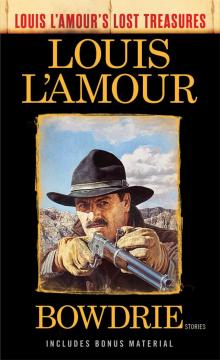 Bowdrie_Louis L'Amour's Lost Treasures
Bowdrie_Louis L'Amour's Lost Treasures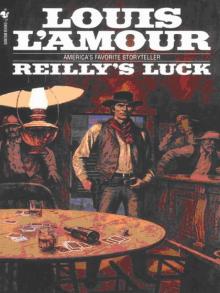 Reilly's Luck
Reilly's Luck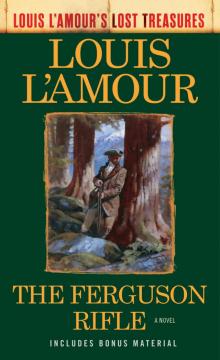 The Ferguson Rifle (Louis L'Amour's Lost Treasures)
The Ferguson Rifle (Louis L'Amour's Lost Treasures)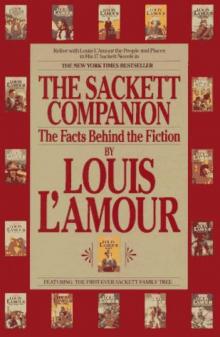 Sacketts 00 - The Sackett Companion (v5.0)
Sacketts 00 - The Sackett Companion (v5.0) The Chick Bowdrie Short Stories Bundle
The Chick Bowdrie Short Stories Bundle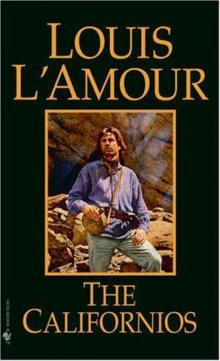 Novel 1974 - The Californios (v5.0)
Novel 1974 - The Californios (v5.0)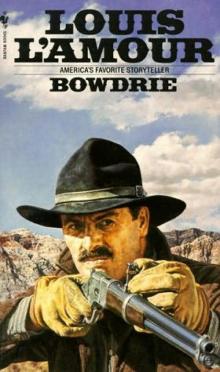 Collection 1983 - Bowdrie (v5.0)
Collection 1983 - Bowdrie (v5.0)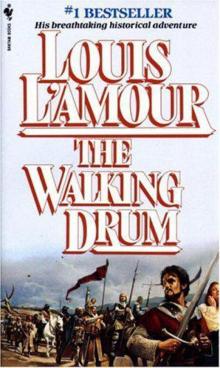 Novel 1984 - The Walking Drum (v5.0)
Novel 1984 - The Walking Drum (v5.0)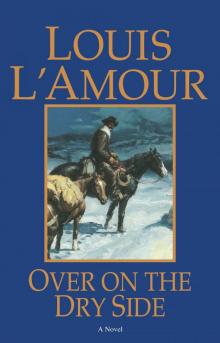 Over on the Dry Side
Over on the Dry Side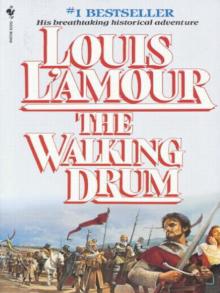 The Walking Drum
The Walking Drum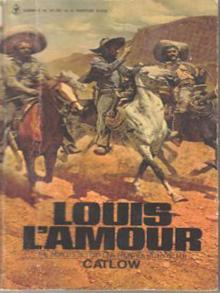 Novel 1963 - Catlow (v5.0)
Novel 1963 - Catlow (v5.0)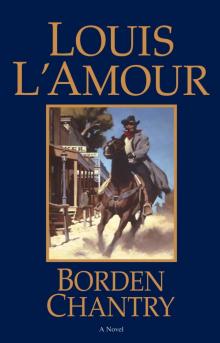 Borden Chantry
Borden Chantry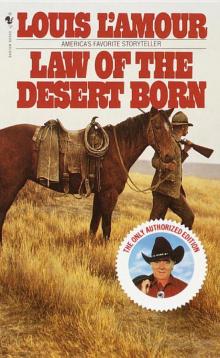 Collection 1983 - Law Of The Desert Born (v5.0)
Collection 1983 - Law Of The Desert Born (v5.0)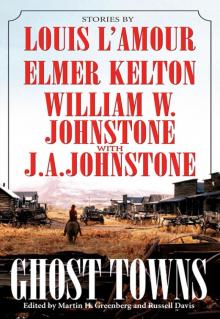 Ghost Towns
Ghost Towns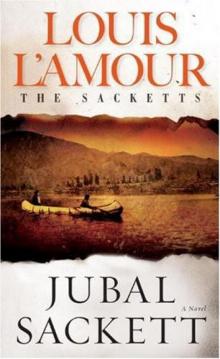 Jubal Sackett (1985) s-4
Jubal Sackett (1985) s-4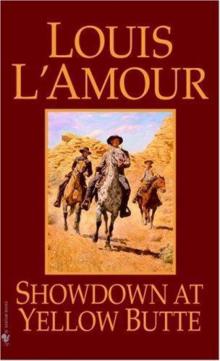 Novel 1953 - Showdown At Yellow Butte
Novel 1953 - Showdown At Yellow Butte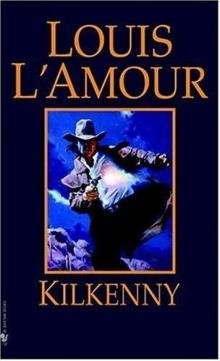 Kilkenny 03 - Kilkenny (v5.0)
Kilkenny 03 - Kilkenny (v5.0)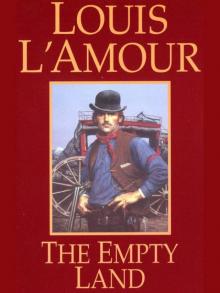 Novel 1969 - The Empty Land (v5.0)
Novel 1969 - The Empty Land (v5.0)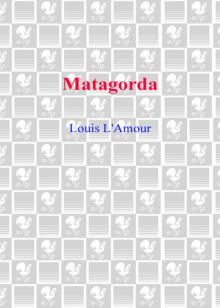 Matagorda
Matagorda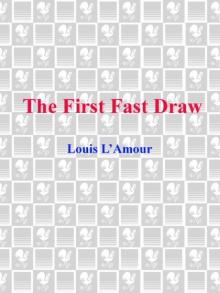 The First Fast Draw
The First Fast Draw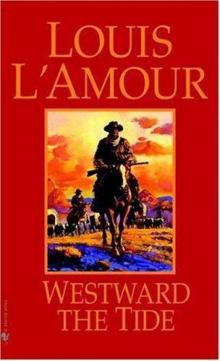 Novel 1950 - Westward The Tide (v5.0)
Novel 1950 - Westward The Tide (v5.0)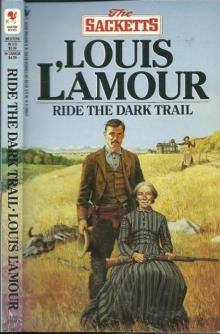 Ride the Dark Trail s-18
Ride the Dark Trail s-18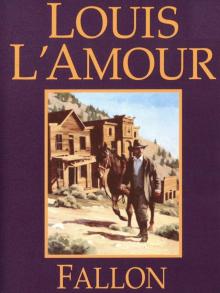 Novel 1963 - Fallon (v5.0)
Novel 1963 - Fallon (v5.0)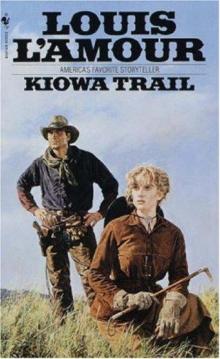 Novel 1964 - Kiowa Trail (v5.0)
Novel 1964 - Kiowa Trail (v5.0)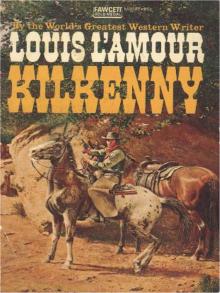 Kilkenny
Kilkenny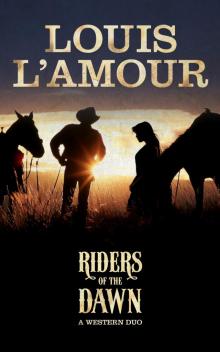 Riders of the Dawn
Riders of the Dawn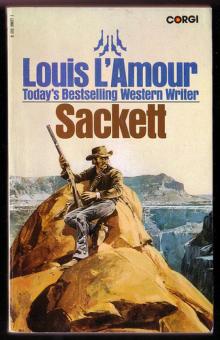 Sackett (1961) s-9
Sackett (1961) s-9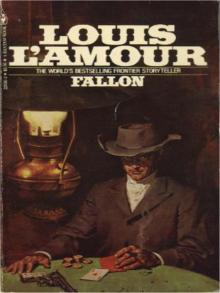 Fallon
Fallon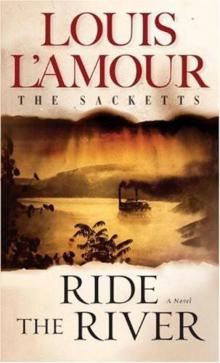 Ride the River (1983) s-5
Ride the River (1983) s-5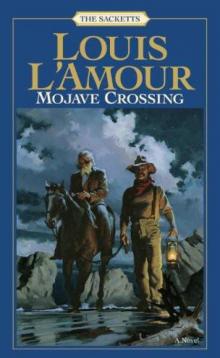 Mojave Crossing s-11
Mojave Crossing s-11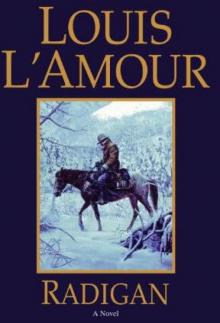 Novel 1958 - Radigan (v5.0)
Novel 1958 - Radigan (v5.0)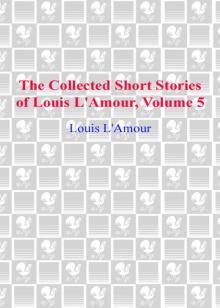 The Collected Short Stories of Louis L'Amour, Volume Five
The Collected Short Stories of Louis L'Amour, Volume Five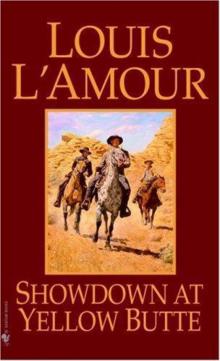 Novel 1953 - Showdown At Yellow Butte (v5.0)
Novel 1953 - Showdown At Yellow Butte (v5.0) Collection 1980 - Yondering
Collection 1980 - Yondering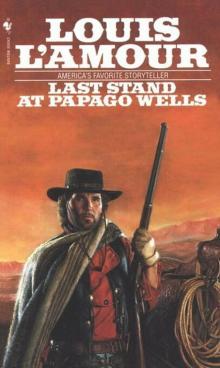 Novel 1957 - Last Stand At Papago Wells (v5.0)
Novel 1957 - Last Stand At Papago Wells (v5.0)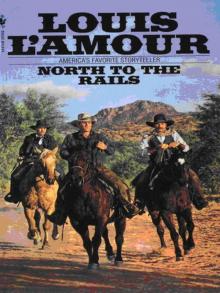 North To The Rails
North To The Rails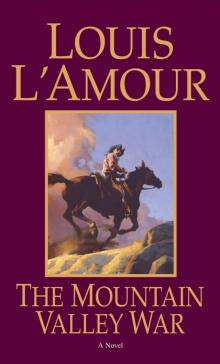 The Kilkenny Series Bundle
The Kilkenny Series Bundle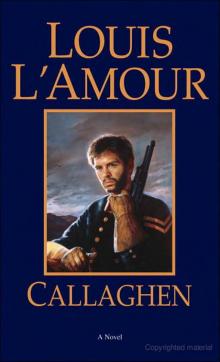 Novel 1972 - Callaghen (v5.0)
Novel 1972 - Callaghen (v5.0)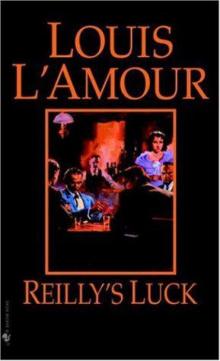 Novel 1970 - Reilly's Luck (v5.0)
Novel 1970 - Reilly's Luck (v5.0)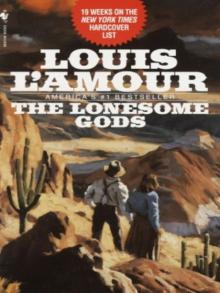 The Lonesome Gods
The Lonesome Gods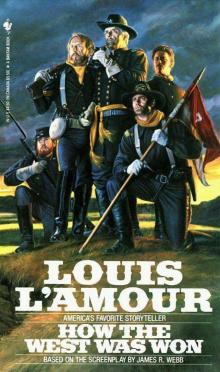 Novel 1963 - How The West Was Won (v5.0)
Novel 1963 - How The West Was Won (v5.0)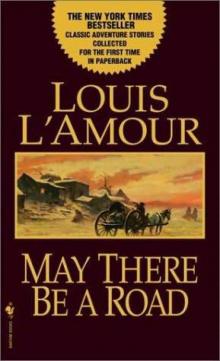 Collection 2001 - May There Be A Road (v5.0)
Collection 2001 - May There Be A Road (v5.0)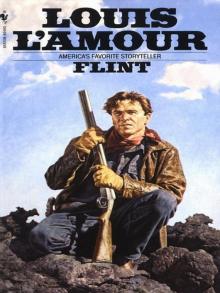 Flint
Flint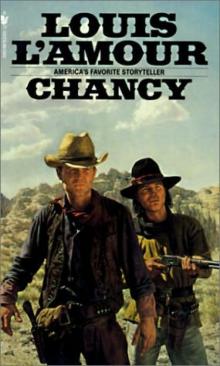 Novel 1968 - Chancy (v5.0)
Novel 1968 - Chancy (v5.0)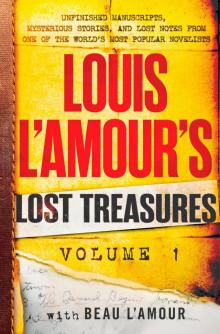 Volume 1: Unfinished Manuscripts, Mysterious Stories, and Lost Notes from One of the World's Most Popular Novelists
Volume 1: Unfinished Manuscripts, Mysterious Stories, and Lost Notes from One of the World's Most Popular Novelists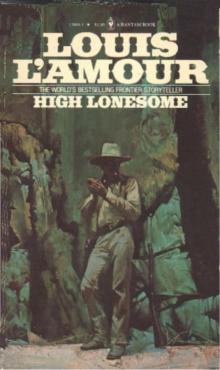 Novel 1962 - High Lonesome (v5.0)
Novel 1962 - High Lonesome (v5.0)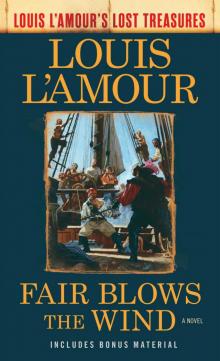 Fair Blows the Wind (Louis L'Amour's Lost Treasures)
Fair Blows the Wind (Louis L'Amour's Lost Treasures)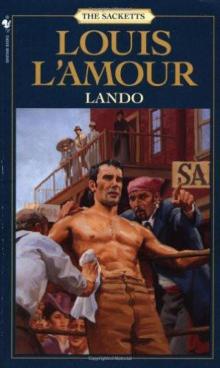 Lando s-8
Lando s-8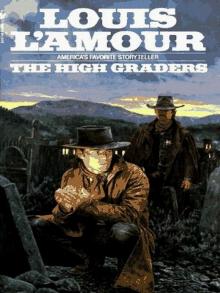 The High Graders
The High Graders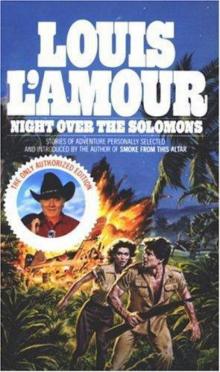 Collection 1986 - Night Over The Solomons (v5.0)
Collection 1986 - Night Over The Solomons (v5.0)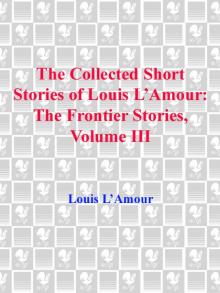 The Collected Short Stories of Louis L'Amour, Volume 3
The Collected Short Stories of Louis L'Amour, Volume 3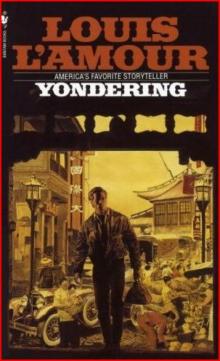 Collection 1980 - Yondering (v5.0)
Collection 1980 - Yondering (v5.0)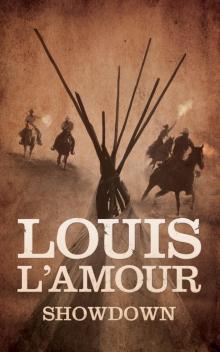 Showdown
Showdown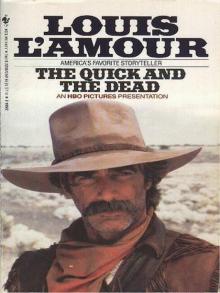 The Quick And The Dead
The Quick And The Dead Novel 1968 - Down The Long Hills (v5.0)
Novel 1968 - Down The Long Hills (v5.0)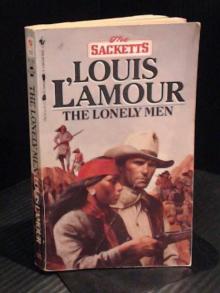 The Lonely Men s-14
The Lonely Men s-14 Bowdrie (Louis L'Amour's Lost Treasures)
Bowdrie (Louis L'Amour's Lost Treasures)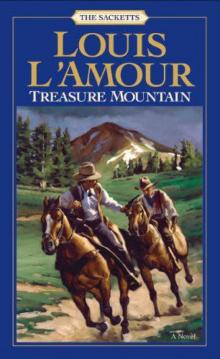 Treasure Mountain s-17
Treasure Mountain s-17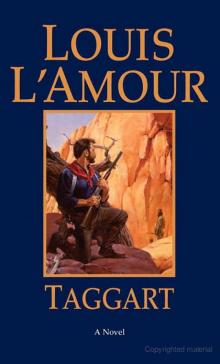 Novel 1959 - Taggart (V5.0)
Novel 1959 - Taggart (V5.0)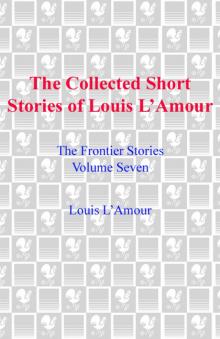 The Collected Short Stories of Louis L'Amour, Volume 7
The Collected Short Stories of Louis L'Amour, Volume 7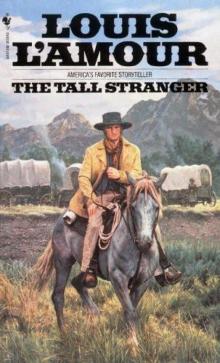 Novel 1957 - The Tall Stranger (v5.0)
Novel 1957 - The Tall Stranger (v5.0)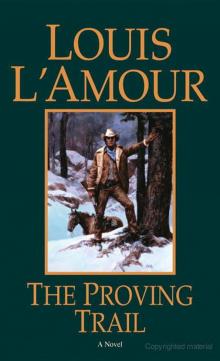 Novel 1978 - The Proving Trail (v5.0)
Novel 1978 - The Proving Trail (v5.0)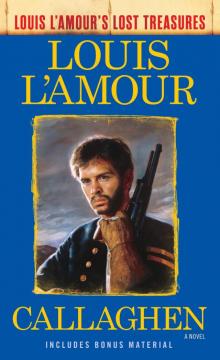 Callaghen (Louis L'Amour's Lost Treasures)
Callaghen (Louis L'Amour's Lost Treasures) Sitka
Sitka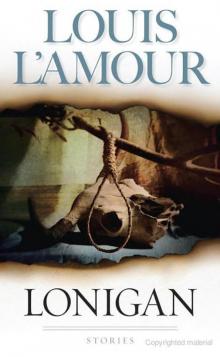 Collection 1988 - Lonigan (v5.0)
Collection 1988 - Lonigan (v5.0)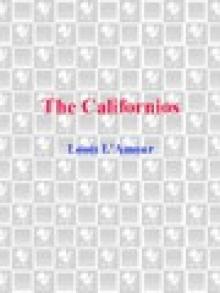 The Californios
The Californios Novel 1966 - The Broken Gun (v5.0)
Novel 1966 - The Broken Gun (v5.0)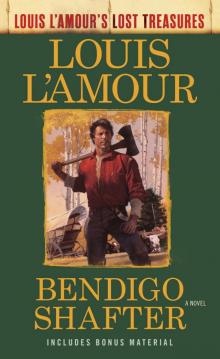 Bendigo Shafter (Louis L'Amour's Lost Treasures)
Bendigo Shafter (Louis L'Amour's Lost Treasures)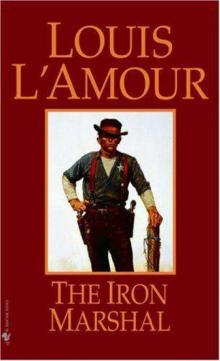 Novel 1979 - The Iron Marshall (v5.0)
Novel 1979 - The Iron Marshall (v5.0)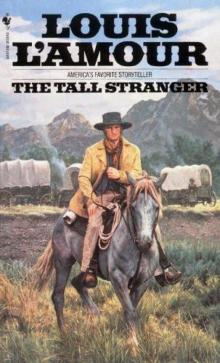 Novel 1957 - The Tall Stranger
Novel 1957 - The Tall Stranger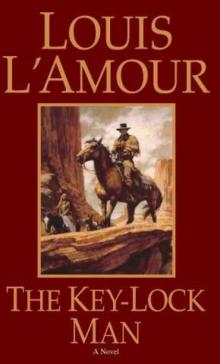 Novel 1965 - The Key-Lock Man (v5.0)
Novel 1965 - The Key-Lock Man (v5.0)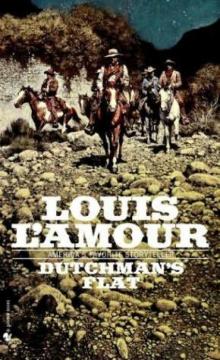 Collection 1986 - Dutchman's Flat (v5.0)
Collection 1986 - Dutchman's Flat (v5.0)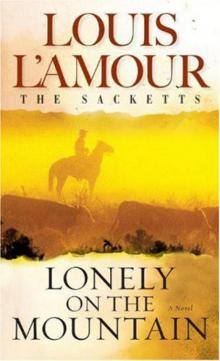 Lonely On the Mountain s-19
Lonely On the Mountain s-19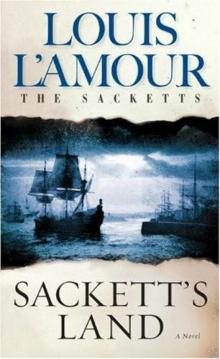 Sackett's Land
Sackett's Land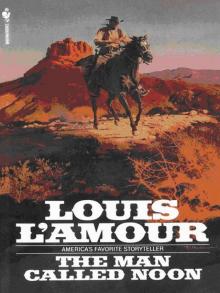 The Man Called Noon
The Man Called Noon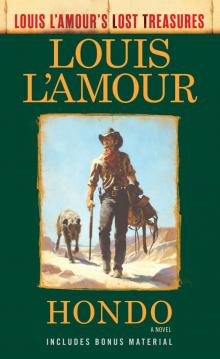 Hondo (Louis L'Amour's Lost Treasures)
Hondo (Louis L'Amour's Lost Treasures) The Lawless West
The Lawless West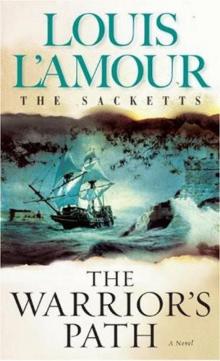 The Warrior's Path (1980) s-3
The Warrior's Path (1980) s-3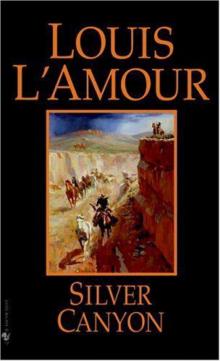 Novel 1956 - Silver Canyon (v5.0)
Novel 1956 - Silver Canyon (v5.0)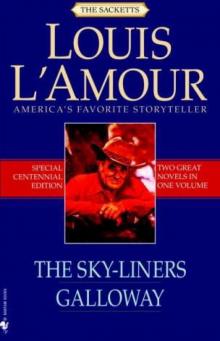 The Sky-Liners (1967) s-13
The Sky-Liners (1967) s-13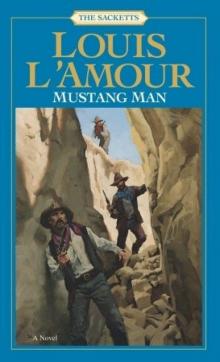 Mustang Man s-15
Mustang Man s-15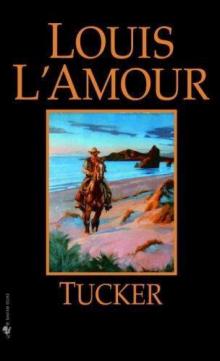 Novel 1971 - Tucker (v5.0)
Novel 1971 - Tucker (v5.0)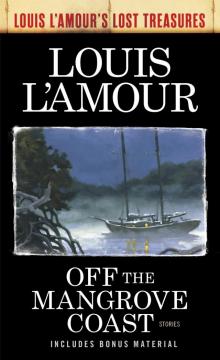 Off the Mangrove Coast (Louis L'Amour's Lost Treasures)
Off the Mangrove Coast (Louis L'Amour's Lost Treasures) Collection 2005 - Riding For The Brand (v5.0)
Collection 2005 - Riding For The Brand (v5.0)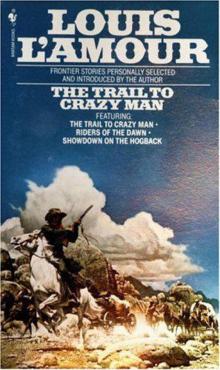 Collection 1986 - The Trail To Crazy Man (v5.0)
Collection 1986 - The Trail To Crazy Man (v5.0)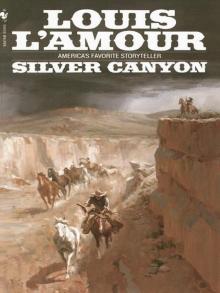 Silver Canyon
Silver Canyon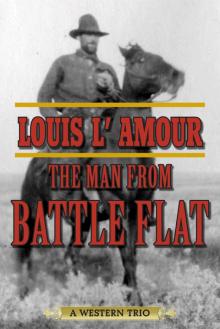 The Man from Battle Flat
The Man from Battle Flat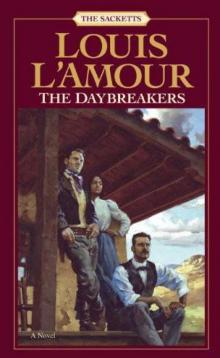 The Daybreakers (1960) s-6
The Daybreakers (1960) s-6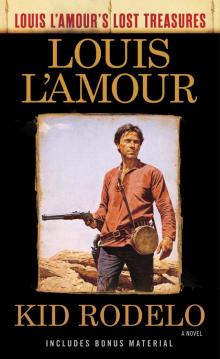 Kid Rodelo (Louis L'Amour's Lost Treasures)
Kid Rodelo (Louis L'Amour's Lost Treasures)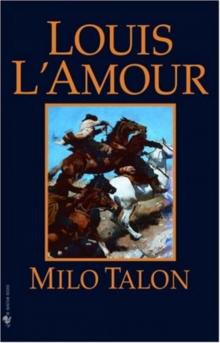 Milo Talon
Milo Talon Novel 1973 - The Man From Skibbereen (v5.0)
Novel 1973 - The Man From Skibbereen (v5.0)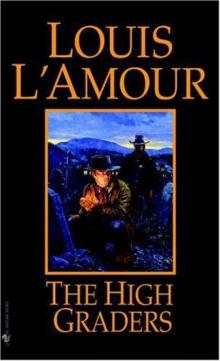 Novel 1965 - The High Graders (v5.0)
Novel 1965 - The High Graders (v5.0)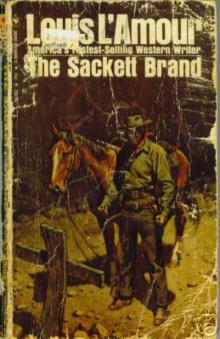 The Sacket Brand (1965) s-12
The Sacket Brand (1965) s-12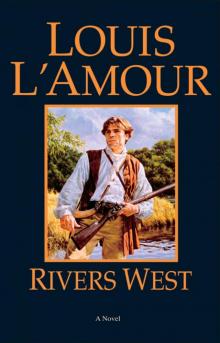 Rivers West
Rivers West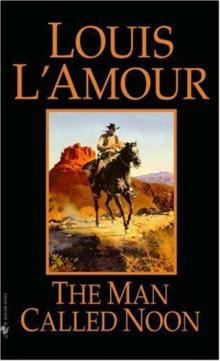 Novel 1970 - The Man Called Noon (v5.0)
Novel 1970 - The Man Called Noon (v5.0)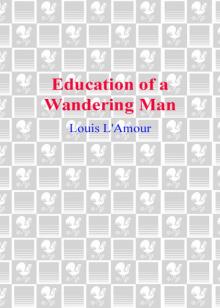 Education of a Wandering Man
Education of a Wandering Man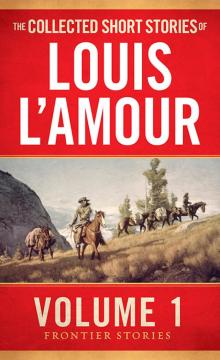 The Collected Short Stories of Louis L'Amour, Volume 1
The Collected Short Stories of Louis L'Amour, Volume 1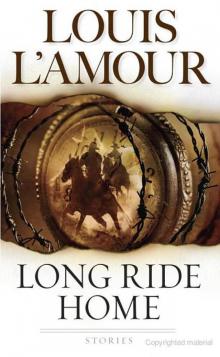 Collection 1989 - Long Ride Home (v5.0)
Collection 1989 - Long Ride Home (v5.0)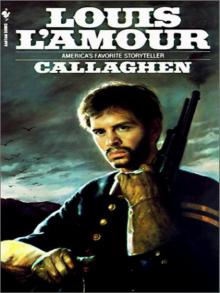 Callaghen
Callaghen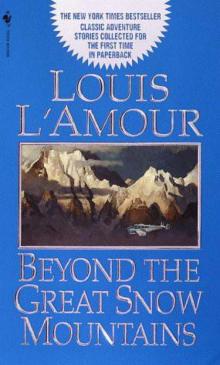 Collection 1999 - Beyond The Great Snow Mountains (v5.0)
Collection 1999 - Beyond The Great Snow Mountains (v5.0)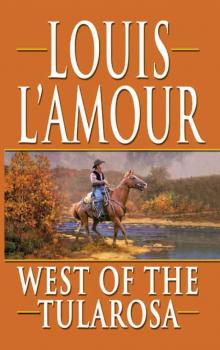 West of the Tularosa
West of the Tularosa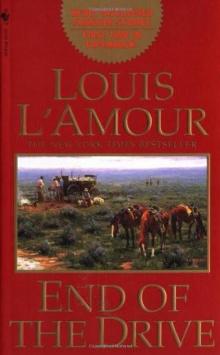 End Of the Drive (1997) s-7
End Of the Drive (1997) s-7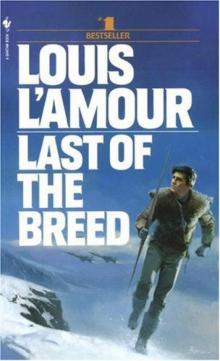 Novel 1986 - Last Of The Breed (v5.0)
Novel 1986 - Last Of The Breed (v5.0)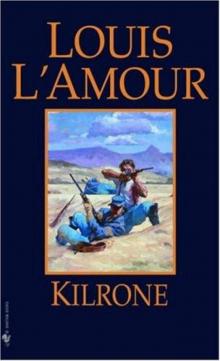 Novel 1966 - Kilrone (v5.0)
Novel 1966 - Kilrone (v5.0)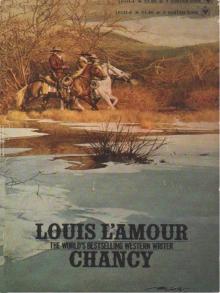 Chancy
Chancy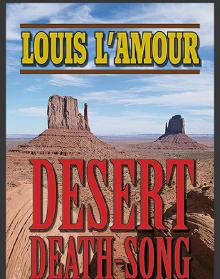 Desert Death-Song
Desert Death-Song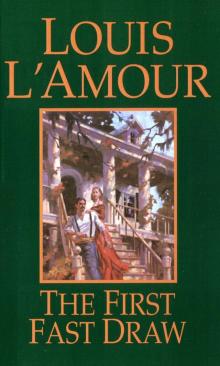 Novel 1959 - The First Fast Draw (v5.0)
Novel 1959 - The First Fast Draw (v5.0)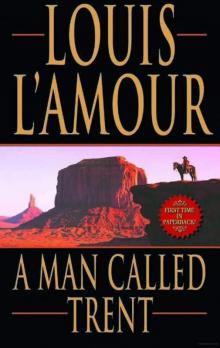 Kilkenny 02 - A Man Called Trent (v5.0)
Kilkenny 02 - A Man Called Trent (v5.0)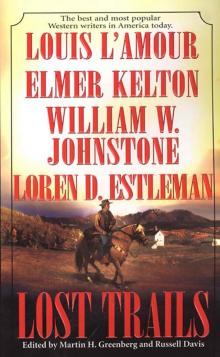 Lost Trails
Lost Trails Novel 1972 - Callaghen
Novel 1972 - Callaghen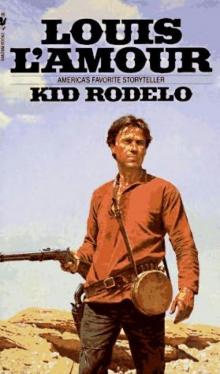 Novel 1966 - Kid Rodelo (v5.0)
Novel 1966 - Kid Rodelo (v5.0)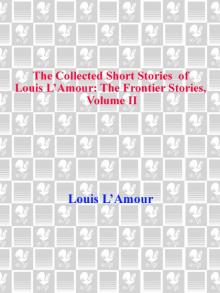 The Collected Short Stories of Louis L'Amour, Volume 2
The Collected Short Stories of Louis L'Amour, Volume 2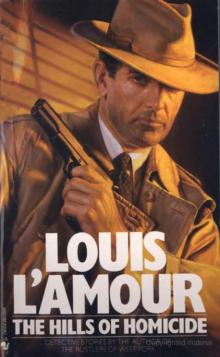 Collection 1983 - The Hills Of Homicide (v5.0)
Collection 1983 - The Hills Of Homicide (v5.0)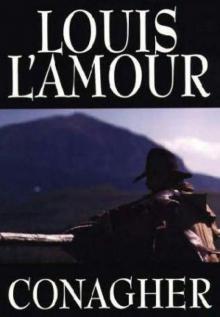 Novel 1969 - Conagher (v5.0)
Novel 1969 - Conagher (v5.0)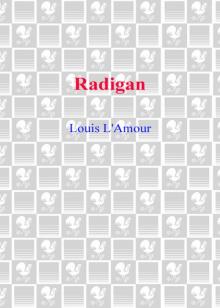 Radigan
Radigan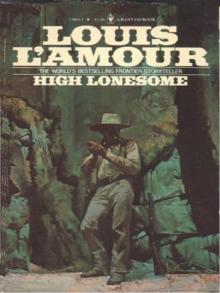 High Lonesome
High Lonesome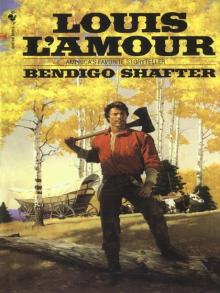 Bendigo Shafter
Bendigo Shafter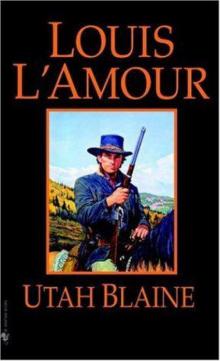 Novel 1954 - Utah Blaine (As Jim Mayo) (v5.0)
Novel 1954 - Utah Blaine (As Jim Mayo) (v5.0)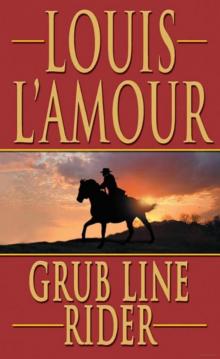 Collection 1990 - Grub Line Rider (v5.0)
Collection 1990 - Grub Line Rider (v5.0)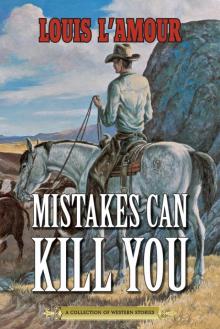 Mistakes Can Kill You
Mistakes Can Kill You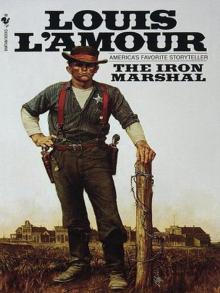 The Iron Marshall
The Iron Marshall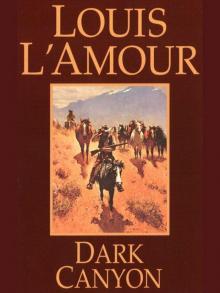 Novel 1963 - Dark Canyon (v5.0)
Novel 1963 - Dark Canyon (v5.0)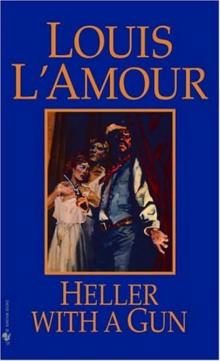 Novel 1955 - Heller With A Gun (v5.0)
Novel 1955 - Heller With A Gun (v5.0)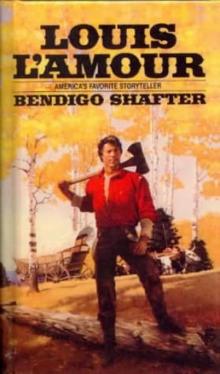 Novel 1978 - Bendigo Shafter (v5.0)
Novel 1978 - Bendigo Shafter (v5.0)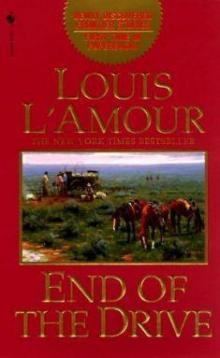 Collection 1997 - End Of The Drive (v5.0)
Collection 1997 - End Of The Drive (v5.0)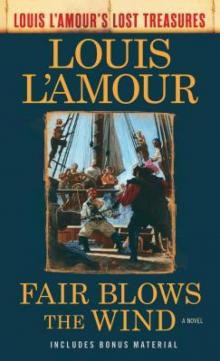 Fair Blows the Wind
Fair Blows the Wind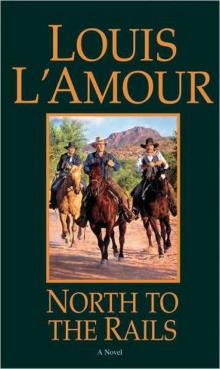 Talon & Chantry 07 - North To The Rails (v5.0)
Talon & Chantry 07 - North To The Rails (v5.0)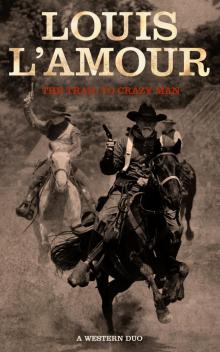 The Trail to Crazy Man
The Trail to Crazy Man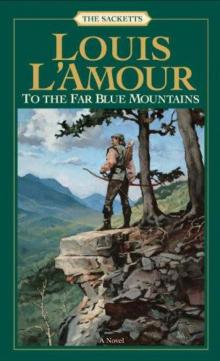 To the Far Blue Mountains (1976) s-2
To the Far Blue Mountains (1976) s-2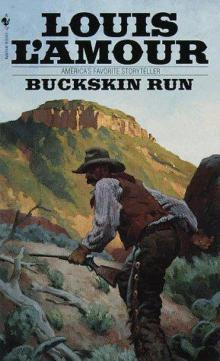 Collection 1981 - Buckskin Run (v5.0)
Collection 1981 - Buckskin Run (v5.0)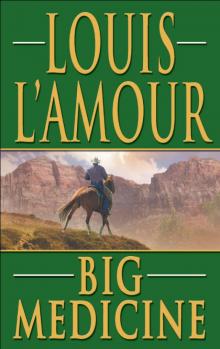 Collection 2008 - Big Medicine (v5.0)
Collection 2008 - Big Medicine (v5.0)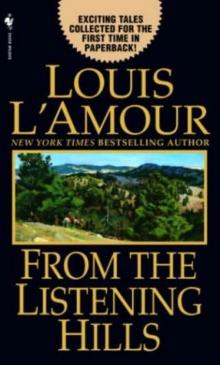 Collection 2003 - From The Listening Hills (v5.0)
Collection 2003 - From The Listening Hills (v5.0)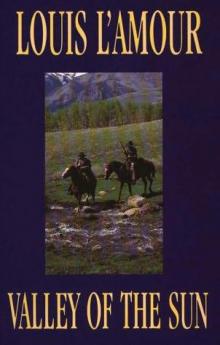 Collection 1995 - Valley Of The Sun (v5.0)
Collection 1995 - Valley Of The Sun (v5.0)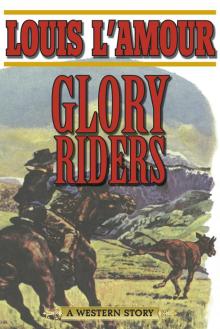 Glory Riders
Glory Riders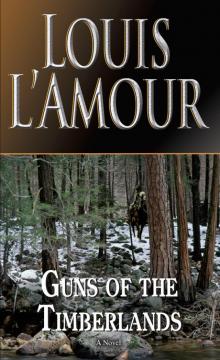 Guns of the Timberlands
Guns of the Timberlands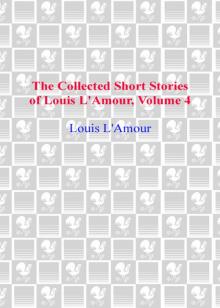 The Collected Short Stories of Louis L'Amour, Volume Four
The Collected Short Stories of Louis L'Amour, Volume Four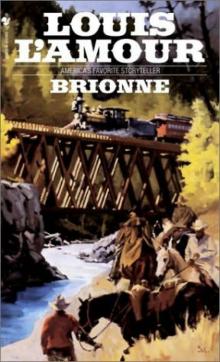 Novel 1968 - Brionne (v5.0)
Novel 1968 - Brionne (v5.0)